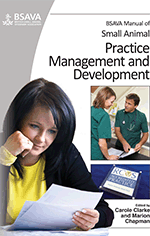
Full text loading...

Veterinary dentistry ranges from basic scaling, polishing and tooth extraction procedures to include more advanced methods of conserving teeth. The dental equipment required varies with the individual requirements of the practice, client needs and expectations, and financial constraints. This chapter provides information on the dental room or area, including equipment and management considerations.
Dentistry, Page 1 of 1
< Previous page | Next page > /docserver/preview/fulltext/10.22233/9781910443156/9781910443156.9-1.gif

Full text loading...













